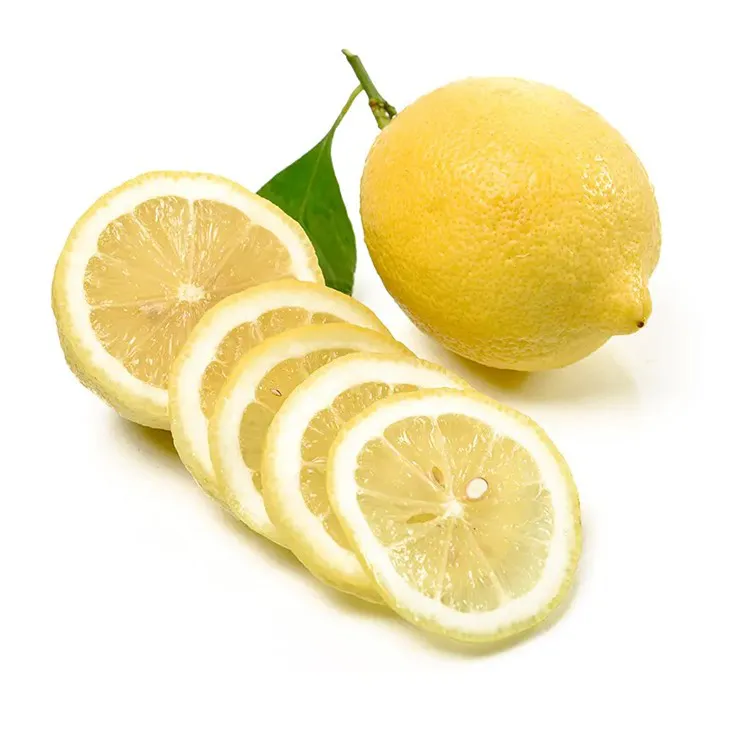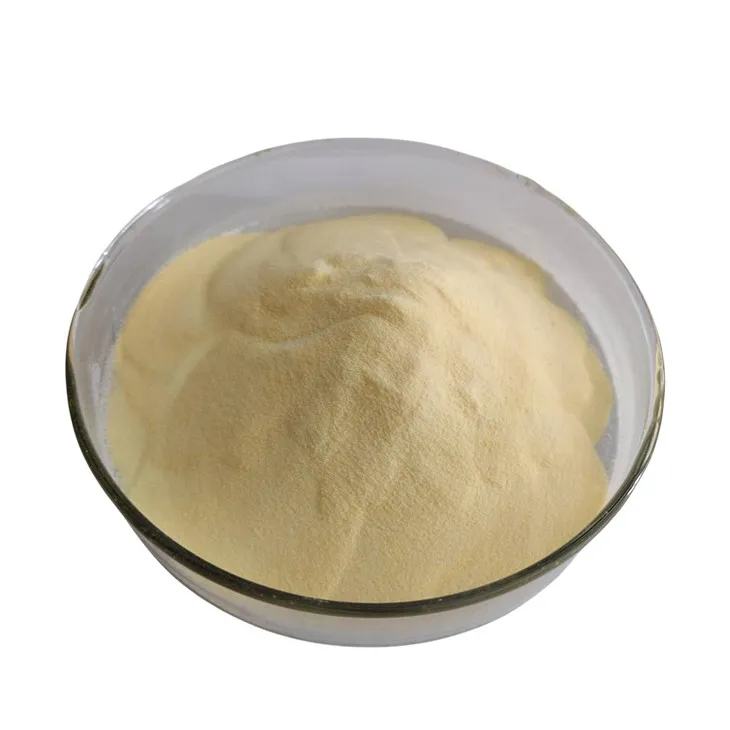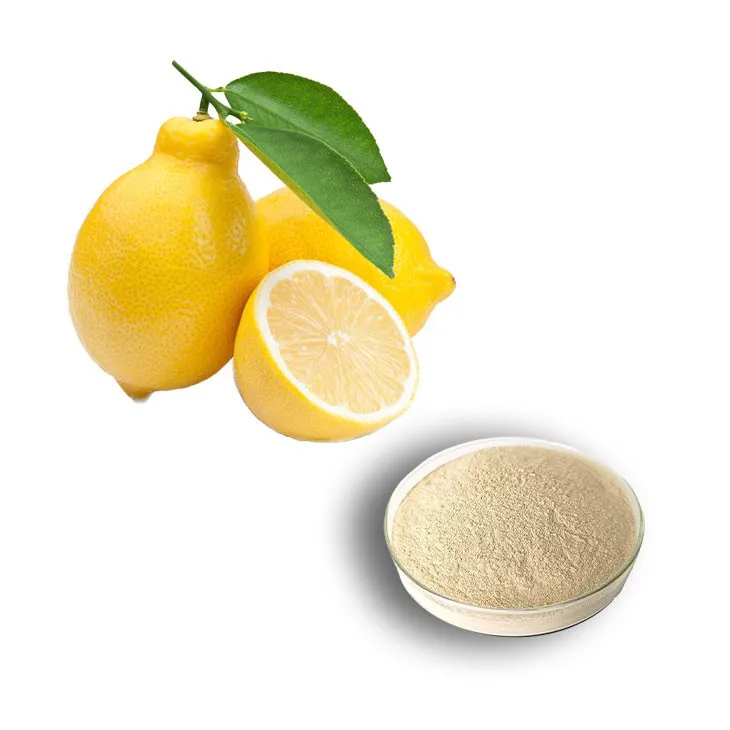- 0086-571-85302990
- sales@greenskybio.com
Lemon Extract: From Leaves to Extraction.
2024-11-14

The Significance of Lemon Leaves
Lemon leaves play a crucial role in the overall vitality of the lemon tree. They are not just an accessory but an integral part of the plant's life cycle. Lemon leaves are responsible for photosynthesis, a process by which plants convert sunlight, carbon dioxide, and water into glucose and oxygen. This glucose serves as the energy source for the plant, enabling it to grow, develop, and reproduce.
In addition to their role in photosynthesis, lemon leaves also contribute to the plant's defense mechanism. They contain certain compounds that can act as natural deterrents against pests and diseases. For example, some secondary metabolites in lemon leaves may have antimicrobial properties, protecting the plant from harmful bacteria and fungi.
Interestingly, lemon leaves may also be a source of precursors for Lemon Extract. These precursors are substances that can be further processed or transformed during the extraction process to obtain the final extract. While the main components of Lemon Extract are often derived from the fruit, the leaves can also contribute certain aromatic and bioactive compounds.

Traditional Extraction Techniques
Traditional extraction techniques for Lemon Extract have been used for centuries and are still relevant today in some regions. One of the most common traditional methods is maceration. Maceration involves soaking lemon parts (including sometimes the leaves) in a solvent, usually ethanol or oil. The process can be relatively simple. For example:
- First, the lemon parts are carefully washed and dried to remove any impurities.
- Then, they are placed in a container with the chosen solvent. The ratio of lemon parts to solvent is important and is often determined based on experience or traditional knowledge.
- The container is sealed and left to stand for a period of time, which can range from a few days to several weeks. During this time, the solvent extracts the desirable compounds from the lemon parts.
- Finally, the resulting liquid is filtered to remove any solid residues, and the lemon extract is obtained.
Another traditional technique is steam distillation. In steam distillation:
- Lemon parts are placed in a distillation apparatus.
- Steam is passed through the lemon parts. The heat from the steam causes the volatile compounds in the lemon to vaporize.
- The vaporized compounds, along with the steam, are then condensed back into a liquid. Since the compounds have different solubilities in water, they can be separated from the water component, resulting in the lemon extract.
Traditional extraction techniques often have the advantage of being relatively low - cost and can be carried out with simple equipment. However, they may also have some limitations. For example, the extraction efficiency may not be as high as modern methods, and the quality of the extract may be more variable.

Modern Extraction Techniques
Modern extraction techniques for lemon extract have evolved significantly, offering more precise and efficient ways of obtaining high - quality extract. One such technique is supercritical fluid extraction (SFE). In SFE, supercritical carbon dioxide is used as the solvent.
Supercritical carbon dioxide has unique properties. It has the density of a liquid, which allows it to dissolve a wide range of compounds effectively, and the diffusivity of a gas, enabling it to penetrate the lemon parts quickly. The process of SFE involves:
- Pressurizing carbon dioxide to its supercritical state. This requires specialized equipment that can control the pressure and temperature precisely.
- Passing the supercritical carbon dioxide through the lemon parts. The compounds of interest are extracted into the supercritical fluid.
- By changing the pressure and temperature conditions, the extracted compounds can be separated from the supercritical carbon dioxide. This allows for a very pure and high - quality lemon extract to be obtained.
Another modern technique is microwave - assisted extraction (MAE). MAE uses microwave energy to heat the lemon parts and the solvent simultaneously. This has several advantages:
- It significantly reduces the extraction time compared to traditional methods. The microwave energy can penetrate the plant material quickly, accelerating the release of the desired compounds into the solvent.
- It can also improve the extraction efficiency. The selective heating of the microwave can target the areas where the compounds are located more effectively.
However, modern extraction techniques also have their drawbacks. They often require more expensive equipment and a higher level of technical expertise to operate.

Quality Assessment of Lemon Extract
The quality of lemon extract is determined by several factors, regardless of the extraction technique used. One of the most important factors is the purity of the extract. A high - quality lemon extract should be free from contaminants such as pesticides, heavy metals, and other impurities. This requires strict quality control during the entire production process, from the sourcing of the lemon raw materials to the final extraction and packaging.
Composition is another crucial aspect. The ideal lemon extract should contain the appropriate balance of bioactive compounds, such as flavonoids, limonoids, and essential oils. These compounds are responsible for the characteristic flavor, aroma, and potential health benefits of the extract. Analytical techniques such as chromatography (e.g., high - performance liquid chromatography - HPLC) and spectroscopy can be used to analyze the composition of the extract.
The stability of the extract is also vital. Lemon extract may be subject to degradation over time due to factors such as exposure to light, heat, and oxygen. Packaging materials and storage conditions play a significant role in maintaining the stability of the extract. For example, using dark - colored, airtight containers and storing the extract in a cool, dry place can help prolong its shelf - life.

Uses of Lemon Extract in the Food Industry
Lemon extract has a wide range of uses in the food industry. One of the most common applications is as a flavor enhancer. The fresh, zesty flavor of lemon extract can add a pleasant tang to a variety of foods. For example:
- In baking, lemon extract can be used in cakes, cookies, and muffins. It can enhance the flavor of these baked goods, giving them a refreshing citrusy note. A small amount of lemon extract can transform a plain vanilla cake into a delicious lemon - flavored treat.
- In the production of beverages, lemon extract is used in lemon - flavored drinks, such as lemonade and certain soft drinks. It provides a more natural and intense lemon flavor compared to artificial flavorings.
- In the confectionery industry, lemon extract is used in candies, gummies, and other sweets. It gives these products their characteristic lemon taste, which is highly popular among consumers.
Another use in the food industry is as a preservative. Some of the compounds in lemon extract, such as limonoids, have antimicrobial properties. They can help inhibit the growth of bacteria, yeast, and molds in food products, thereby extending their shelf - life. This natural preservative property makes lemon extract an attractive alternative to synthetic preservatives in some cases.
Uses of Lemon Extract in the Perfume Industry
In the perfume industry, lemon extract is highly valued for its zesty scent. The essential oils present in lemon extract contribute to its fresh, citrusy aroma, which is a popular note in many perfumes.
Perfumers use lemon extract in different ways:
- As a top note, lemon extract can provide an initial burst of freshness in a perfume. When a perfume is first sprayed, the top notes are the first to be detected. The lemon scent can create a clean, invigorating impression, setting the tone for the other fragrance notes that follow.
- It can also be blended with other floral, woody, or oriental notes to create complex and unique fragrances. For example, when combined with jasmine and sandalwood, the lemon extract can add a bright, refreshing element to a more sensual and warm base.
However, the use of lemon extract in perfumes also requires careful consideration. Since the scent of lemon can be quite volatile, it needs to be formulated in a way that ensures its longevity in the perfume. This may involve using fixatives or other techniques to stabilize the fragrance.
Uses of Lemon Extract in the Health Sector
Lemon extract has attracted attention in the health sector due to its antioxidant properties. Antioxidants are substances that can neutralize free radicals in the body. Free radicals are unstable molecules that can cause oxidative stress, which is associated with various health problems, including heart disease, cancer, and aging.
The bioactive compounds in lemon extract, such as flavonoids and limonoids, are believed to be the main sources of its antioxidant activity. Some of the potential health benefits of lemon extract include:
- Cardiovascular health: Lemon extract may help reduce cholesterol levels and improve blood vessel function. By reducing oxidative stress in the blood vessels, it can contribute to a lower risk of heart disease.
- Cancer prevention: Although more research is needed, some studies suggest that the antioxidant compounds in lemon extract may have anti - cancer properties. They may be able to inhibit the growth of cancer cells or protect normal cells from the damage caused by carcinogens.
- Skin health: The antioxidant and anti - inflammatory properties of lemon extract can be beneficial for the skin. It may help reduce skin inflammation, improve skin tone, and protect the skin from damage caused by UV radiation.
However, it is important to note that while lemon extract shows potential health benefits, it should not be considered a substitute for medical treatment. More research is still needed to fully understand its effects on human health and to determine the appropriate dosage and usage.
FAQ:
What role do lemon leaves play in the plant?
Lemon leaves contribute to the plant's vitality. They may also be a source of precursors for the lemon extract.
What are the modern extraction techniques for lemon extract?
Modern extraction techniques for lemon extract can include advanced solvent - based methods, supercritical fluid extraction, etc. These techniques are designed to efficiently extract the desired components from the lemon source while maintaining high quality. For example, supercritical fluid extraction uses a substance above its critical temperature and pressure as a solvent, which can offer high selectivity and purity in the extraction of lemon extract.
How do traditional extraction techniques affect the quality of lemon extract?
Traditional extraction techniques, such as steam distillation or cold - pressing, can have both positive and negative impacts on the quality of lemon extract. Steam distillation can effectively extract volatile components but may also cause some loss of heat - sensitive compounds. Cold - pressing is a more gentle method that can preserve more natural flavors and nutrients, but it may not be as efficient in extracting all the desired components as some modern techniques.
What are the uses of lemon extract in the food industry?
In the food industry, lemon extract is widely used for enhancing flavors. It can add a fresh, citrusy note to various products such as baked goods, beverages, and confectionery. For example, in cakes and cookies, lemon extract can provide a tangy flavor that complements the sweetness, making the product more appealing to consumers.
How is lemon extract used in the perfume industry?
In the perfume industry, lemon extract is valued for its zesty scent. It can be used as a top note in perfumes to provide an initial burst of fresh, citrusy aroma. This bright and invigorating scent can add a sense of freshness and vitality to the perfume composition.
Related literature
- The Chemistry and Extraction of Lemon - Based Compounds"
- "Lemon Extract: Production, Properties and Applications"
- "Traditional and Modern Extraction Methods of Lemon Extract in the Context of Quality"
- ▶ Hesperidin
- ▶ citrus bioflavonoids
- ▶ plant extract
- ▶ lycopene
- ▶ Diosmin
- ▶ Grape seed extract
- ▶ Sea buckthorn Juice Powder
- ▶ Beetroot powder
- ▶ Hops Extract
- ▶ Artichoke Extract
- ▶ Reishi mushroom extract
- ▶ Astaxanthin
- ▶ Green Tea Extract
- ▶ Curcumin Extract
- ▶ Horse Chestnut Extract
- ▶ Other Problems
- ▶ Boswellia Serrata Extract
- ▶ Resveratrol Extract
- ▶ Marigold Extract
- ▶ Grape Leaf Extract
- ▶ blog3
- ▶ blog4
- ▶ blog5
-
Organic Tongkat Ali extract powder factory.
2024-11-14
-
How to make powder with ashwagandha extract.
2024-11-14
-
Rosehip extract manufacturers from China.
2024-11-14
-
The best cat's claw extract in nature.
2024-11-14
-
Chinese Dandelion Leaf Extract Suppliers.
2024-11-14
-
Yohimbine Bark Extract
2024-11-14
-
melatonin extract
2024-11-14
-
Hedyotis Diffusa Extract
2024-11-14
-
Natural grape seed extract
2024-11-14
-
Bamboo Leaf extract
2024-11-14
-
Green Tea Extract
2024-11-14
-
Red Date Extract
2024-11-14
-
Motherwort Extract
2024-11-14
-
Curcumin Extract
2024-11-14
-
Lemon Juice Powder
2024-11-14





















